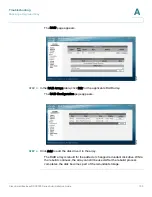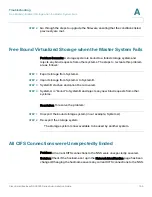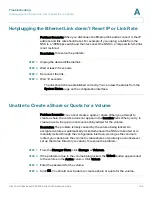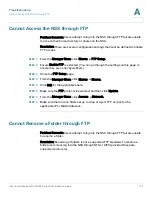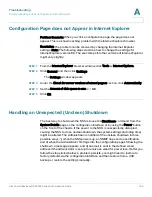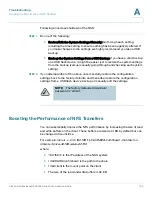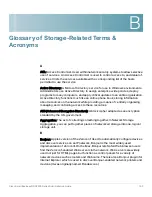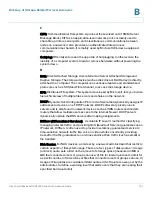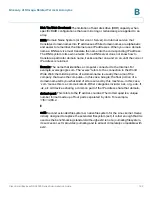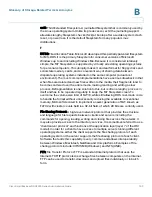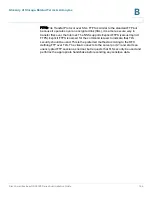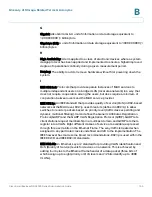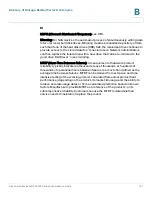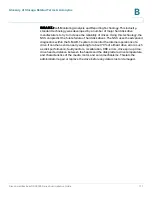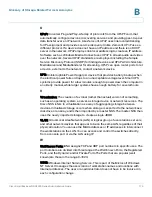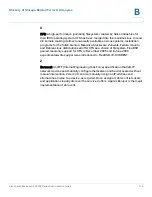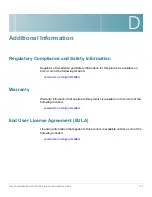
Glossary of Storage-Related Terms & Acronyms
Cisco Small Business NSS2000 Series Administration Guide
166
B
IEEE 802.1X: Standard for port-based network access control that authenticates
devices attached to a LAN port. This standard establishes connection to a
network and its connected resources if authentication is approved, and
conversely, prevents access to the network if authentication fails. An
authentication server resides in each Cisco Small Business NSS product.
J
JBOD: Just a Bunch of Disks. Multiple hard disk drives (HDDs) that are combined
into a single virtual drive. In a JBOD configured array, each drive can be a different
size or capacity (this storage method can be used to turn two or more odd-sized
hard drives into one useful drive). There is no redundancy provided with a JBOD
and the failure of one disk in the array usually results in the loss of the data stored
on the JBOD.
Journaling Filesystem: A fault-resilient filesystem that provides data integrity
because updates to directories and bitmaps are constantly written to a serial log
on disk before the original disk log is updated. If the system fails, a full journaling
filesystem restores the data on the disk to its pre-crash configuration. It also
recovers unsaved data and stores it in the location where it would have gone if the
computer had not crashed. This type of system is beneficial for mission-critical
systems. A physical journal logs verbatim copies of blocks that will be written later
(for example, ext3) as compared with a logical journal that logs metadata changes
in a special, more compact format. Logical journals can improve performance by
reducing the amount of data that needs to be read from and written to the journal
in large, metadata-heavy operations (for example, deleting a large directory tree).
XFS keeps a logical journal.
L
LDAP (Lightweight Directory Access Protocol): A protocol that lets users find
organizations, workgroups, other users, network resources (such as directories,
volumes, files) or peripheral devices (such as printers and NAS devices) on a local
network, in a intranet or on the Internet without knowing the specific domain
where they reside. A single LDAP directory can be mirrored on multiple servers
that can be periodically synchronized.
Link Aggregation Group: (LAG) A computer networking term used to describe
using multiple Ethernet network cables/ports in parallel to increase the link speed
beyond the limits of any one single cable or port. Other terms for this also include
"ethernet trunk", "NIC teaming", "port teaming", "port trunking", "NIC bonding" and
"link aggregate group" (LAG), and is based on a networking standard known as
"IEEE 802.3ad".

